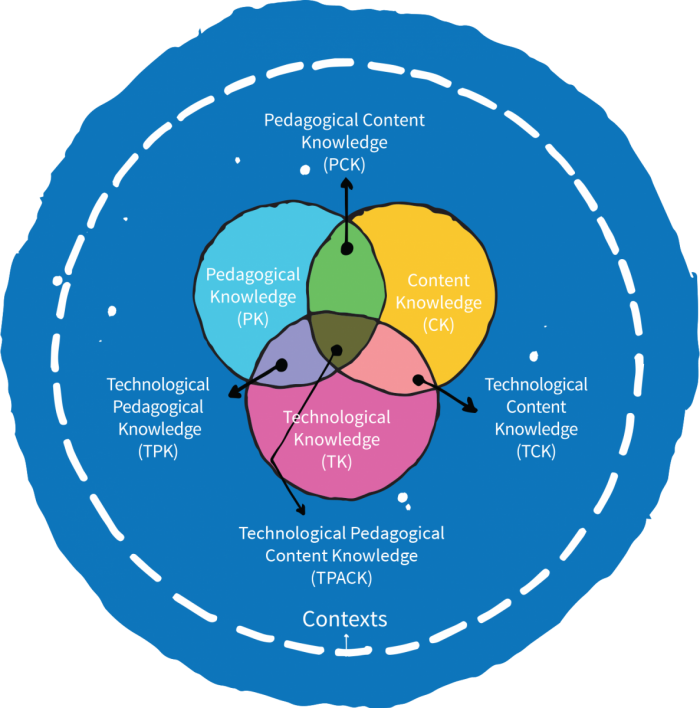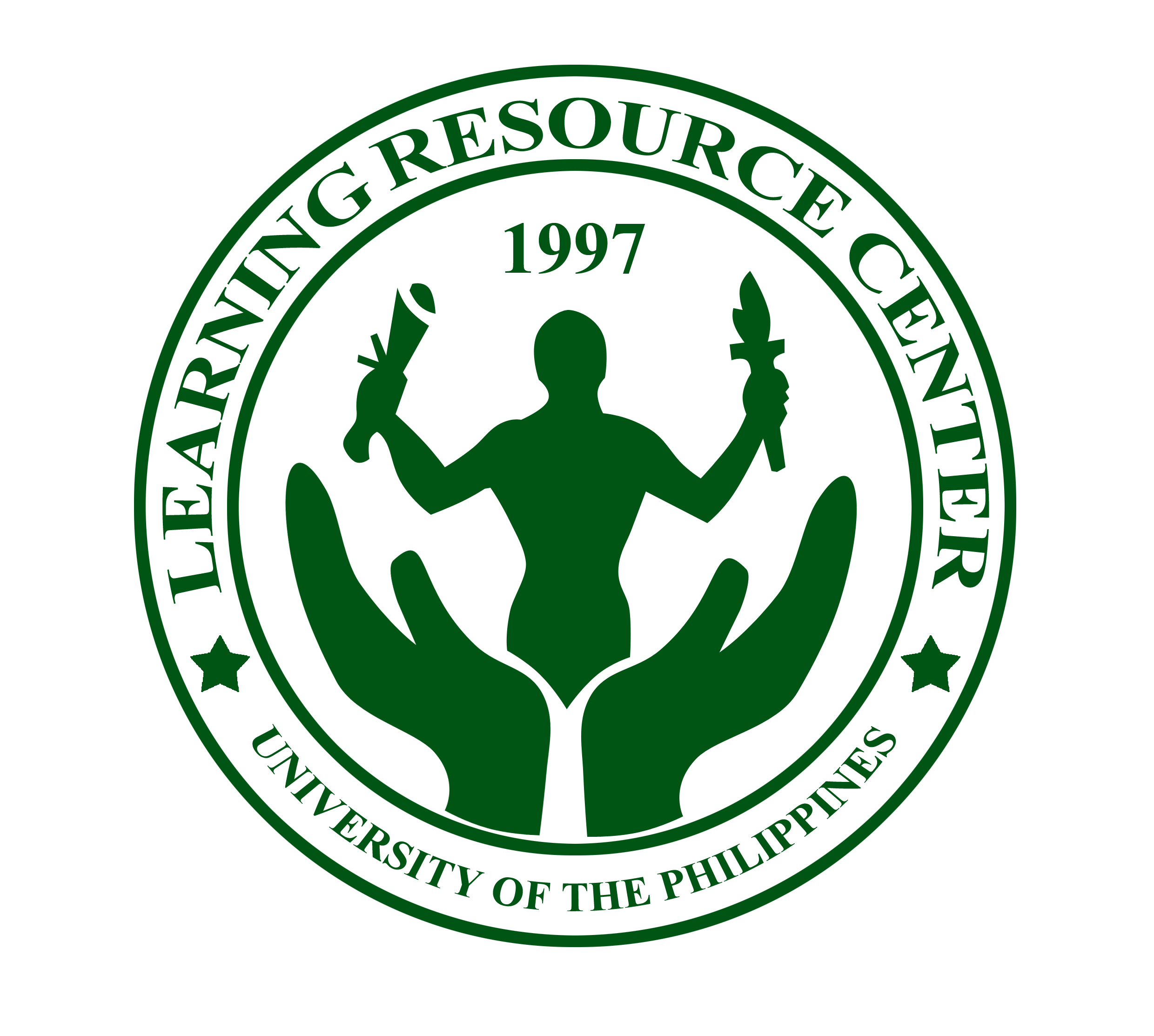Knowledge and content can easily be accessed through the internet. Thus, students use it more often. With this in mind, teachers should use the internet smartly. Teachers can incorporate the use of technology and the internet in their class. One of the specific pedagogical methods is TPACK. It stands for Technology Pedagogical Content Knowledge which explains the different sets of knowledge—namely, pedagogical knowledge, content knowledge, and technological knowledge that teachers need to teach to students effectively and with the use of technology (McGraw-Hill Education Canada, 2017). The TPACK framework was developed by Punya Mishra and Matthew Koehler. This framework shows the interconnection of technology to the other two sets of knowledge, thus, emphasizing that teachers should connect, interact, and work within this framework to teach students effectively.
TPACK is developed to help improve the learning and teaching strategy of teachers, especially in today’s generation of digital natives. This framework targets the learning development of both teachers and students through the use of technology in the classroom. With this in mind, TPACK can be a great tool in contributing to the quality of education for the nation’s sustainable growth and development.
TPACK is a helpful tool for teachers in appraising their teaching strategy and work. According to a study conducted by the Australasian Society for Computers in Learning in Tertiary Education (ASCILITE), it was found out that the TPACK framework enhanced teacher candidates’ ability to use technology in their learning and later in their profession (Rodgers, 2018).
It is a common approach that technology is different from teaching and learning. For instance, a professional workshop on using a particular software or app was done in school. However, it was not discussed here on how it could fit in classroom learning (McGraw-Hill Education Canada, 2017) which is pointed at as a negative impact by Mishra and Koehler.TPACK is a framework that shows the relationship between technology, pedagogical, and content (Rodgers, 2018). The lack of awareness on TPACK results in the separation of technology from teaching and learning, thus, causing problems in the use of technology in teaching.
Mishra and Koehler identified four problems caused by the unawareness of the TPACK framework. First, technology is rapidly developing and advancing, which makes it difficult to cope up. Second, technology is mainly developed for business and not for learning, which is the reason why students would end up learning how to use the particular technology in class rather than learning the content of the class. Third, it is the situational nature of the class (McGraw-Hill Education Canada, 2017). Teachers can always adjust the lesson taught in class to meet the needs of the students, but the app or software used cannot. Finally, teachers tend to teach the students what is the technology used, what is in it, what are the skills needed for it rather than how teachers should teach their students. A set of knowledge does not go alone in the framework; however, blending them is critical for effective teaching and learning.
Understanding TPACK contributes to the learning of the students. According to Dr. Morit Maor, this engages students in collaborative learning and their development in the concept of digital pedagogies—may be the concept that can encompass teaching approach, students’ attitudes, and desired to learn outcomes. Moreover, Dr. Maor stated that the framework should also be used to develop new forms of professional development “to promote a better understanding of the synergy between technology and pedagogy.” TPACK gives a significant potential impact on teachers, training, professional development, and students; thus, this concept or framework is not just important in education but highly significant (Rogers, 2018).
One of the Millennium Development Goals in the Philippines is to contribute good quality education for the nation’s growth and development and to let people live in peace and prosperity. According to the Unite for Quality Education (2018), quality education enables people to develop all of their attributes and skills to achieve their potential as human beings and members of society. Consequently, it is significant to adopt effective teaching and learning strategies to give to students and aid teachers. TPACK framework can contribute to that quality of education considering the type of individuals today—that is, individuals are tech-savvy or digitally-inclined.
The TPACK framework enhances the teachers’ ability to use a particular technology in class. It helps in improving their performance in teaching the students. Moreover, the framework provides a holistic set of knowledge—that is, the interconnection of the different parts of the framework. One cannot particularly be effective without others. Furthermore, it helps in the students’ learning skills in class because the teaching and learning strategy TPACK promotes use technology and, it is known that students are dependent on the technology they have. It encourages students for collaborative learning and increases their understanding of difficult topics (Kurt, 2018).
Quality education is highly significant to achieve sustainable development for the country and the people. People can do all development achievements such as health advances, agricultural innovation to better public administration, and private sector growth. The best way to get those achievements is to open the potential of an individuals mind and skills, and education is the best tool for achieving such a goal (King, 2011).
Cited References:
Kurt, S. (2018). Technological Pedagogical Content Knowledge (TPACK) Framework – Educational Technology. Retrieved from https://educationaltechnology.net/technological-pedagogical-content-knowledge-tpack-framework/
Rodgers, D. (2018). The TPACK Framework Explained (With Classroom Examples). Retrieved from https://www.schoology.com/blog/tpack-framework-explained
What Is TPACK Theory and How Can It Be Used in the Classroom? | McGraw-Hill Education, Canada. (2017). Retrieved from https://www.mheducation.ca/blog/what-is-tpack-theory-and-how-can-it-be-used-in-the-classroom
Kafyulilo, A. (2010). TPACK for Pre-Service Science and Mathematics Teaching. Enschede: University of Twente. Retrieved from https://files.eric.ed.gov/fulltext/ED531601.pdf
King, E. (2011). Education is Fundamental to Development and Growth. Retrieved from https://blogs.worldbank.org/education/education-is-fundamental-to-development-and-growth
Contributed by:
Marie Elaiza Cajes, UPHS G12

